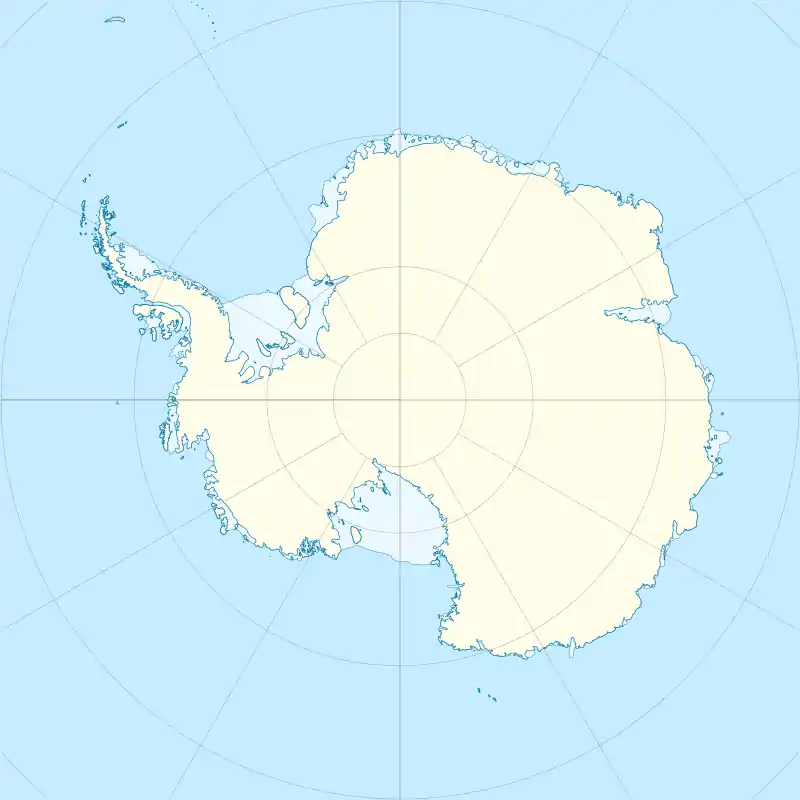Largo Island
Largo Island is an elongated island, 2 kilometres (1 nmi) in extent, which is the largest of the Duroch Islands, Graham Land, Antarctica. It lies 2 kilometres (1 nmi) west of Halpern Point, Trinity Peninsula. The Chilean Antarctic Expedition, 1947–48, charted the feature as three islands to which the personal names Rozas, Swett, and Horn were applied. It was charted as one island by Martin Halpern, leader of the University of Wisconsin geological party in this area, 1961–62, who reported the name "Largo" (meaning long) to be the only one used by Chilean officials at the nearby General Bernardo O'Higgins Station.[1]
 Largo Island Location in Antarctica | |
| Geography | |
|---|---|
| Location | Antarctica |
| Coordinates | 63°18′S 57°53′W |
| Administration | |
| Administered under the Antarctic Treaty System | |
| Demographics | |
| Population | Uninhabited |
Several rocks in the water off Largo Island have been charted and named by the Chilean Antarctic Expedition. Labbé Rock lies about 0.7 nautical miles (1.3 km) northwest of Largo Island. It is named for First Lieutenant Custodio Labbé Lippi, navigation officer of the transport ship Angamos.[2] The Acuña Rocks, also known as Islote Acuña, are a pair of rocks lying 0.4 miles (0.6 km) west of Largo Island, named after Sub-Teniente Acuña, a member of the Chilean expedition.[3] Vidaurre Rock breaks the surface at low water just 0.05 nautical miles (0.1 km) east of the main group of the Acuña Rocks.[4]
References
- "Largo Island". Geographic Names Information System. United States Geological Survey, United States Department of the Interior. Retrieved 8 June 2020.
- "Labbé Rock". Geographic Names Information System. United States Geological Survey. Retrieved 8 June 2020.
- "Acuña Rocks". Geographic Names Information System. United States Geological Survey. Retrieved 8 June 2020.
- "Vidaurre Rock". Geographic Names Information System. United States Geological Survey. Retrieved 8 June 2020.
![]() This article incorporates public domain material from websites or documents of the United States Geological Survey.
This article incorporates public domain material from websites or documents of the United States Geological Survey.